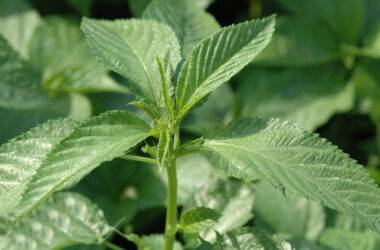Many farmers who want to get rid of pests without using harsh chemicals turn to neem oil spray. People love this natural answer that comes from neem tree seeds because it can get rid of many annoying bugs and even some plant diseases. But, like everything else, it has its quirks and things to think about. If you want to take better care of your plants, whether you’re a seasoned farmer or just starting out, you should know how neem oil works and how to use it correctly.
Main Points
- The seeds of the Indian neem tree produce neem oil, a natural insecticide.
- It can kill a variety of bugs, including aphids, spider mites, and whiteflies.
- Neem oil requires softening before use. You can either spray it on or soak it into the ground.
- It’s generally safe, but if you’re not careful, it can harm beneficial insects.
- It often requires regular reapplication to maintain its effectiveness as a pesticide.
How to Use Neem Oil Spray on Plants
What is neem oil?
Neem oil comes from the seeds of the neem tree, which grows in India and Southeast Asia. People have been using this oil for hundreds of years in health and farming due to its numerous applications. Neem oil contains a variety of chemicals, with azadirachtin being the primary ingredient responsible for its insect-killing properties. There are no harsh chemicals used in this organic method to get rid of pests, so eco-friendly gardeners love it.
The process of Extracting neem oil
The process of getting neem oil is simple and mostly involves pressing neem seeds under cold water. This method preserves most of the beneficial chemicals present in the seeds. There are two main types of neem oil, depending on the method of production:
- Cold-pressed neem oil retains all its natural chemicals, making it the purest form.
- Commercial goods often contain a refined form of Clarified Hydrophobic Extract. We remove some compounds to enhance its scent and extend its shelf life.
Benefits of Using Neem Oil on plants.
Neem oil benefits plants in numerous ways.
- Controlling bugs: Neem oil is effective at getting rid of bugs because it breaks their life cycle by stopping them from feeding and reproducing.
- Defense Against Fungi: It can help keep fungal diseases like black spots and powdery mildew at bay.
- Friendly to the environment: Since it breaks down naturally, it doesn’t stay in the environment for long, which lowers the risk to good bugs when used correctly.
Neem oil does more than just keep pests away. It’s an all-around way to take care of plants that will keep your garden healthy and beautiful without hurting the environment.
Neem oil spray’s mechanism of action for getting rid of pests
The main chemical that kills pests is azadirachtin, which is abundant in neem oil. It works by making it difficult for insects to eat and grow, especially when they are young. It also deters insects due to its unpleasant odor. Neem oil suffocates soft-bodied insects when applied. There are numerous ways to use neem oil to eradicate pests. Neem oil not only eliminates pests, but also disrupts their life cycle, preventing their growth.
Different Kinds of Pests Caught
Neem oil is a valuable tool for gardening. It gets rid of a lot of bugs, like aphids, whiteflies, thrips, and spider mites. Honey mold and powdery mildew are two fungi that neem oil can’t kill. The key is that it works on a wide range of pests that eat or drink from plants. It also works on mealybugs and scales that are still young. However, it does not harm beneficial insects such as bees and butterflies that do not consume plants.
Limitations and Things to Think About
Neem oil is great, but it’s not a miracle cure. It only works on young insects and doesn’t heal sick plant parts. Applying it at the appropriate stage of the pest’s life cycle is crucial. Weather and light can affect neem oil, so it’s advisable to apply it early in the morning or late in the afternoon. Also, some plants may be sensitive, so it’s a beneficial idea to test in a small area first. Don’t forget that straight application to the affected areas is the most important thing for success.
Different forms of neem oil are available for use in plant care.
Cold-pressed neem oil
Straight from the neem tree seeds, cold-pressed neem oil retains most of its natural qualities. This type contains a significant amount of azadirachtin, a chemical that plays a crucial role in eliminating pests. Azadirachtin stops insects from reproducing, which makes it a beneficial way to get rid of many types of bugs. Organic gardeners frequently opt for cold-pressed neem oil due to its versatility in treating a diverse array of plants.
Cleared-up Hydrophobic Extract
Another common type is neem oil that undergoes separation and becomes slippery. Processing has removed the azadirachtin from this type of neem oil. This makes it less powerful as a pesticide and fungicide, but it still works. It mostly works by smothering bugs and is especially effective at getting rid of leaf fungus and mildew. For people who need to deal with bugs and their eggs, this form can be useful.
How to Pick the Right Form
Think about what kind of pests you have when choosing between cold-pressed neem oil and the clear hydrophobic extract.
- Cold-pressed neem oil is the best way to get rid of young bugs and keep them from growing up.
- Clarified Hydrophobic Extract: This is the best way to kill bugs and their eggs.
Each has pros and cons, so choose the right one for your needs. To make sure you’re getting the right type for gardening, always read the package to see what the active ingredients are.
Getting the right kind of neem oil can make a big difference in how well you get rid of pests. Because each type has its own unique properties and uses, you can successfully get rid of pests and keep your garden healthy.
Check out more tools to discover how to use neem oil to eradicate leaf fungus, kill insects and fungi, and repel common pests.

Different Ways to Use a Neem Oil Spray:
The Foliar Spray Method
A simple way that many farmers like to use neem oil is to spray it on the leaves of plants. How to do it:
- If you want to avoid wind spread and rapid evaporation, apply the paint on a calm, cloudy day.
- Fill a spray bottle with a neem oil solution, making sure it is very weak according to the directions on the box.
- Mist the whole plant, paying special attention to the inside and outside of the leaves, where bugs like to hide.
- Make sure the spray hits the point of runoff, which means the leaves should start to drip a little.
If you wear gloves and a mask, you can keep your skin and lungs safe from direct touch. Apply it again every 7 to 10 days, or as needed, to keep it working.
Method of Soil Drench
We pour a diluted neem oil solution directly onto the ground for the soil drench process. This method works especially well against pests that live in the soil, like worms and fungus gnat larvae.
- Use a watering can to mix neem oil and water at the recommended rates.
- Spread the solution out on the dirt around the plant’s base.
- The chemical can help keep pests away that eat the plant’s juices if you let it soak up through its roots.
Reapply every three weeks to keep pests away, or once a week if you’re dealing with a current infestation.
Take care of safety
Although neem oil is generally believed to be safe, there are a few precautions you should take:
Avoid using neem oil when it’s extremely hot outside to prevent damage to the leaves.
Children and pets should stay away from sprayed areas until the spray has dried.
Neem oil stays useful if you keep it in a cool, dark place and only mix what you need for right now.
“Neem oil is a trusted ally in organic gardening, but like any tool, it requires careful handling and respect for both the plants and the environment.”
Tips on How to Use Neem Oil Spray and How to Dilute It
When you use neem oil, it’s essential to get the right mix. First, read the label on everything. The label provides information on the types of bugs it can kill and instructions on how to mix it. Usually, you need to mix neem oil with water. It should be enough for a one-quart water bottle to treat a few plants. You should get a one-gallon pump sprayer for bigger yards. Remember that neem oil breaks down quickly, so only mix what you need for one exercise. Avoid storing diluted oil.
How often are applications made?
It’s not enough to just use neem oil once. For most bugs, you’ll need to use it again every 7 to 10 days. High bug counts may require more frequent testing. Applying a dirt drench every two weeks can deter pests. Be careful not to overdo it by following the box instructions.
How to Avoid Common Mistakes
Using neem oil can be challenging. Don’t fall into these traps:
Avoid spraying when the weather is extremely cold or hot. The best times are early in the morning or late in the afternoon.
Ignoring plants that are sensitive: Neem oil has the potential to damage baby plants or cuttings. If you are not wearing safety gear, it is advisable to conduct a small area test first. Neem oil is natural, but it can hurt skin. To keep yourself safe, put on gloves and maybe even a mask.
It’s possible for neem oil to completely change organic farming, but you need to pay close attention to a few things. As long as you follow these tips, your garden will be healthy.
Neem Oil and the Environment and Safety
Effects on Beneficial Bugs
Often considered a gardener’s best friend, neem oil possesses some unusual properties. It’s usually safe for good bugs like bees and ladybirds, but time is very important. Spray it early in the morning or late at night, when these helpful animals are not as busy. Spraying directly on flowers where bees might be resting is not a beneficial idea. Be smart about how you use this balancing act to keep the good guys in your garden safe.
Pets and people are safe.
Neem oil is safe for both people and animals, which is beneficial news for pet owners and parents. You can use it indoors to eradicate pests from your flowers without fear of harming your pets or family. Keep in mind that some people may have sensitive skin, so it’s a beneficial idea to wear gloves when you apply it.
Benefits for the environment
Neem oil is useful for more than just getting rid of pests; it’s also useful for the earth. This oil breaks down quickly and doesn’t leave any harmful chemicals in the water or dirt. Environmentally conscious individuals frequently opt for neem products due to their certification as organic. Because it breaks down quickly, it has less of an effect on the ecosystem. This is beneficial for both your yard and Mother Nature.
Neem oil is a better way to take care of plants than synthetic pesticides, but it still has some risks. Users should follow the warnings on the package and stay away from the spray as much as possible. Find out more about how safe neem oil is.
Getting rid of common neem oil problems
How to Deal with Ineffectiveness
There are times when neem oil doesn’t seem to work the way it should. If you use the oil incorrectly or it doesn’t effectively combat the pest you’re trying to eradicate, this could occur. If you have a bug problem, make sure you use the right kind of neem oil. Cold-pressed neem oil is beneficial for bug babies, while cleared hydrophobic extract is beneficial for adults and eggs. Also, make sure you cover the tops and bottoms of the leaves when you spread them. It might be necessary to reapply every 7 to 10 days to catch any pests that have just hatched.
Taking Care of Sensitive Plants
Neem oil can burn the leaves of plants that are already sensitive, such as those recently moved or under stress. To keep this from happening, test the oil on a little bit of the plant first. If there’s any damage, wait 24 to 48 hours before you treat the whole plant. When it’s above 85 degrees or below 50 degrees, don’t use neem oil because the high or low temperatures can make plant damage more likely. Be careful with neem oil because it can burn leaves.
The shelf life and storage
If you don’t keep neem oil properly, it might not work as well. Keep it somewhere cool and dry, out of the sun. Use the solution immediately after mixing it with water, as it degrades quickly. Don’t store diluted neem oil. Instead, mix only what you need for each treatment to get the most out of it. If you store your neem oil correctly, it will continue to work as designed.
Finally, use neem oil in your garden.
That’s all there is to it! When it comes to farming, neem oil is like that useful tool you didn’t know you had until now. After you get the hang of it, it’s pretty simple to use, and it works well. Yes, there are some things to watch out for, like not killing too many beneficial bugs, but overall, it’s a beneficial way to keep those annoying pests away. Neem oil can help you get rid of aphids on your roses or spider mites on your flowers. Just remember to follow the directions and give them some time to work. Your plants will be content and healthy soon enough. Have fun planting!










